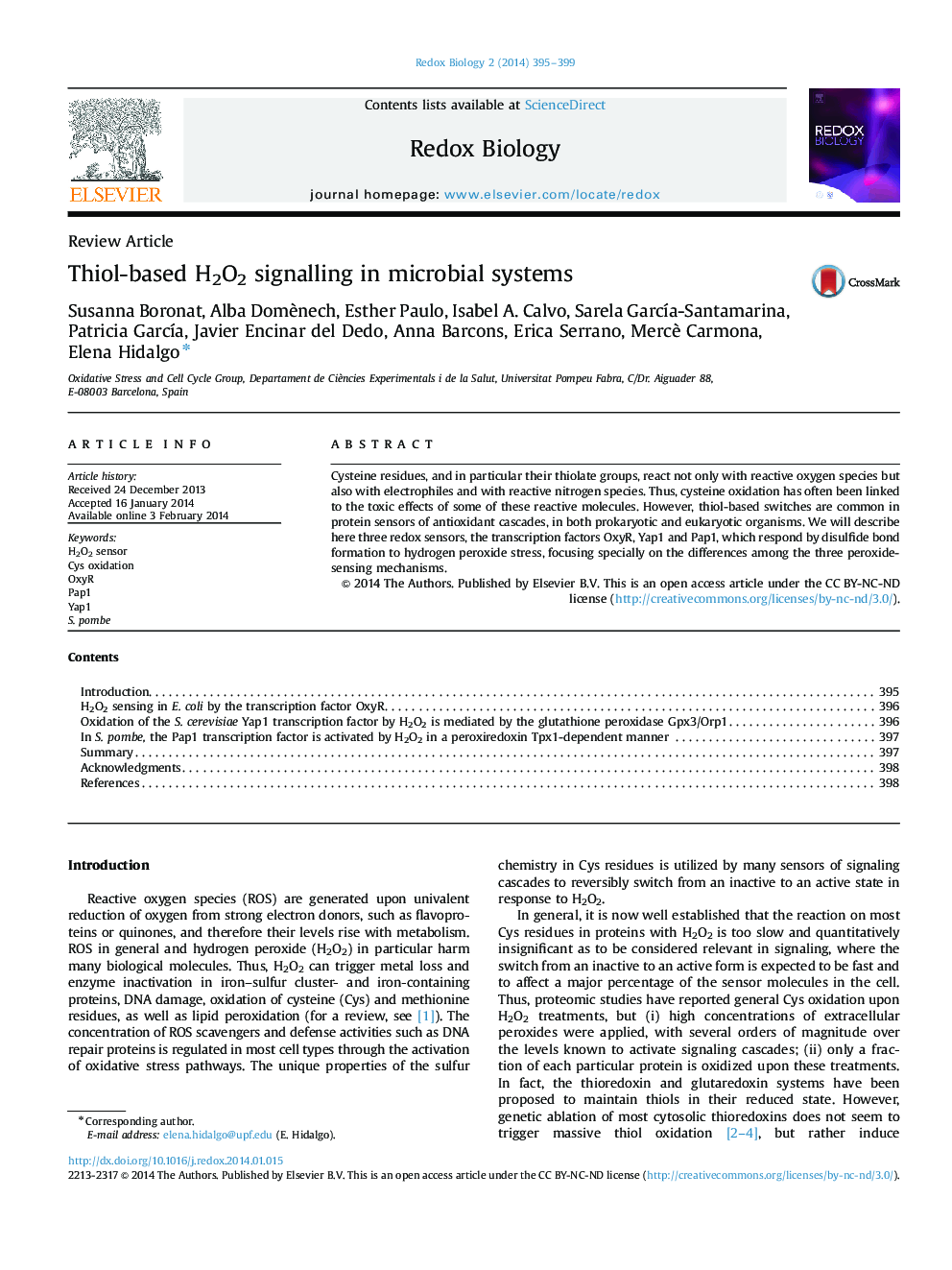| Article ID | Journal | Published Year | Pages | File Type |
|---|---|---|---|---|
| 1922978 | Redox Biology | 2014 | 5 Pages |
Abstract
Cysteine residues, and in particular their thiolate groups, react not only with reactive oxygen species but also with electrophiles and with reactive nitrogen species. Thus, cysteine oxidation has often been linked to the toxic effects of some of these reactive molecules. However, thiol-based switches are common in protein sensors of antioxidant cascades, in both prokaryotic and eukaryotic organisms. We will describe here three redox sensors, the transcription factors OxyR, Yap1 and Pap1, which respond by disulfide bond formation to hydrogen peroxide stress, focusing specially on the differences among the three peroxide-sensing mechanisms.
Graphical abstractFigure optionsDownload full-size imageDownload as PowerPoint slide
Keywords
Related Topics
Life Sciences
Biochemistry, Genetics and Molecular Biology
Ageing
Authors
Susanna Boronat, Alba Domènech, Esther Paulo, Isabel A. Calvo, Sarela García-Santamarina, Patricia García, Javier Encinar del Dedo, Anna Barcons, Erica Serrano, Mercè Carmona, Elena Hidalgo,
